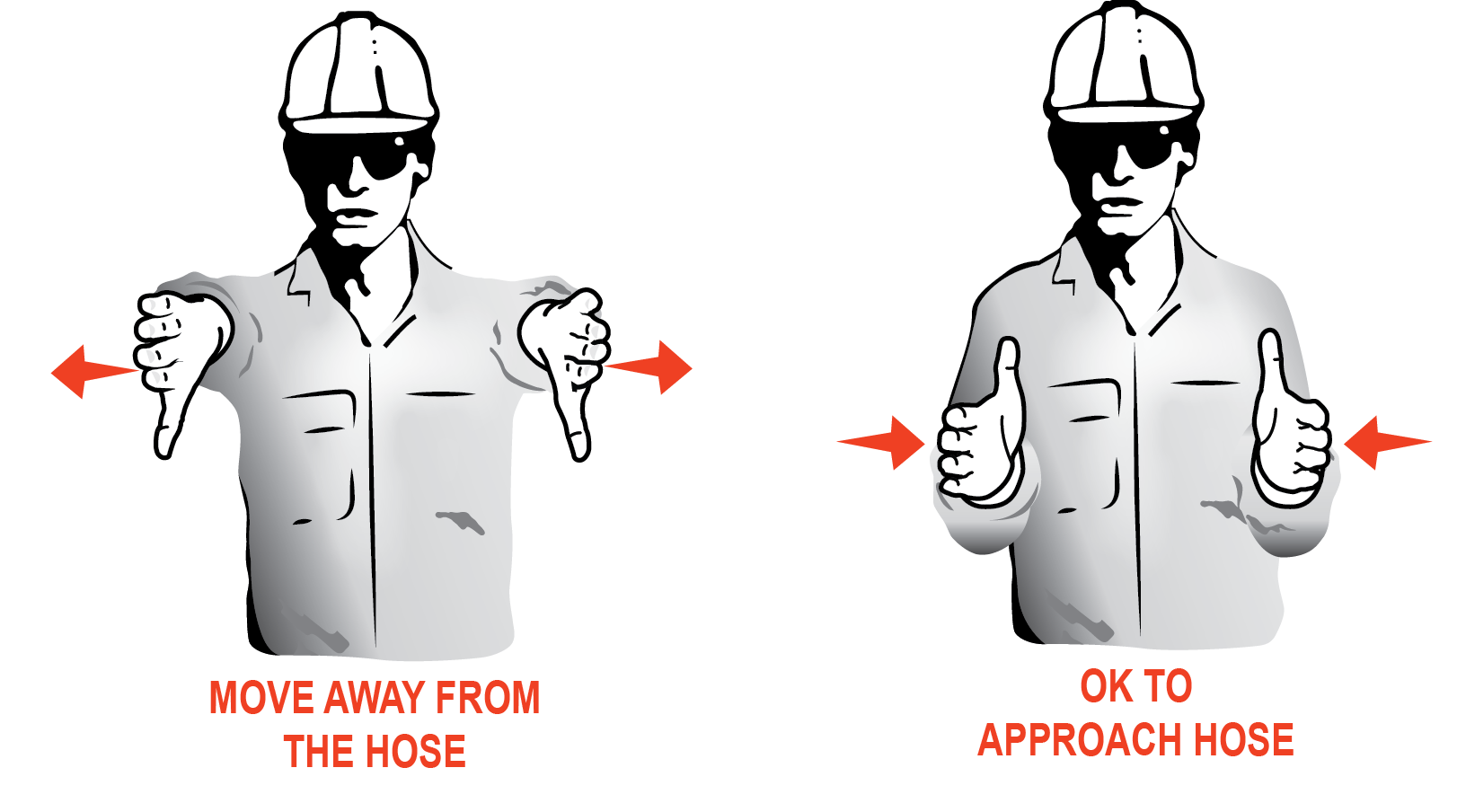ACPA Announces Hose Whipping Safety Bulletin
 The American Concrete Pumping Association (ACPA) is pleased to announce the completion of the NEW Hose Whipping Safety Bulletin. Please review and share copies of the PDF below with your pump operators and your customers.
The American Concrete Pumping Association (ACPA) is pleased to announce the completion of the NEW Hose Whipping Safety Bulletin. Please review and share copies of the PDF below with your pump operators and your customers.
Special care must be taken to prevent hose whipping injuries when operating a concrete pump with a boom. Whenever the pump is stopped for longer than a few minutes, the operator should have all personnel move a reasonable and prudent distance from the discharge hose or, when not practical, move the boom away from the pour to a safe location and re-establish flow before moving the boom back to the pour.
When considering how long to wait before moving all personnel away from the discharge hose, the operator must consider the causes of hose whipping accidents. If the end of the boom has one or more sections in a vertical down position and concrete has drained out of the discharge hose, then air has entered the boom. If the concrete is old, has a low slump, or there are reducers on the end of the boom, there is a greater chance that a blockage may occur which can result in a hose whip when restarting the pump. When any of these conditions are present, the window of time to safely restart the pump may be reduced. Therefore, you may have to get personnel away from the tip hose by warning them to move away, or, if that’s not practical, moving the boom away from them as described above.
Some examples of when it’s impractical to have personnel move away from the hose include: when topping a wall, pouring a column, filling a block wall, or pumping into a confined space. However, if the delay has been for an extended period of time, the operator must take the necessary steps to separate all personnel from the discharge hose even if this means swinging the boom to a safe area and then ensuring the concrete is flowing smoothly before allowing any personnel close to the discharge before pumping is resumed.
It may be to the operator’s advantage to point out this possibility to the pour supervisor before pumping begins, and inquire where wasted concrete should be discharged.
When there are frequent stops and starts, the operator will want to minimize the opportunity for air to enter the boom when not actively pumping. Here are some things that can help prevent injuries:
- When practical, position the boom in a way that the tip or more sections are horizontal or slightly upward rather than vertical. This way, the concrete will not slide out of the boom to be replaced by air when pumping is stopped.
- Before the pour, you may wish to remind the pour supervisor of his responsibility to train the placing crew to move away from the tip hose when starting or restarting the pump and to not approach the hose until the operator says it is okay.
At all times when restarting the pump, even if the delay has been only for a few minutes, the operator should be in a position to see the discharge hose. Slow the pump speed down, and then ‘bump’ the concrete for a partial stroke to confirm that the concrete is flowing with no restriction. If concrete comes out of the discharge hose it indicates there is not a blockage and it is safe to begin pumping slowly and then increase the speed as concrete flow is confirmed.
If concrete does not come out of the discharge hose when ‘bumping’ the concrete, or stops coming out after restarting the pump, it is important to stop the pump, put it in reverse, and take several strokes in reverse to relieve the pressure.
At this time all personnel must be moved a reasonable and prudent distance away from the discharge hose, or the boom must be positioned away from the pour where no personnel are near the discharge. When all personnel are clear slowly pump forward and see if concrete comes out of the discharge hose. If it does, resume pumping.
If it does not come out of the discharge, stop the pump, put it in reverse, and take several strokes in reverse to relieve the pressure. When you are sure the pressure is relieved, locate the blockage and remove it. Remember that some pressure may remain in the line and caution must be used when opening the clamps. Use a shovel or other tool to remain a safe distance from the clamp.
After you have cleared the problem, be sure to confirm steady flow of concrete before allowing personnel to return to the discharge hose.
At all times during the above operational steps, it is important to use a single ended tip hose to prevent more serious injuries if an unexpected hose whip does occur despite following these guidelines.
Please download the PDF of this document here and distribute to your concrete pump operators and your customers.





